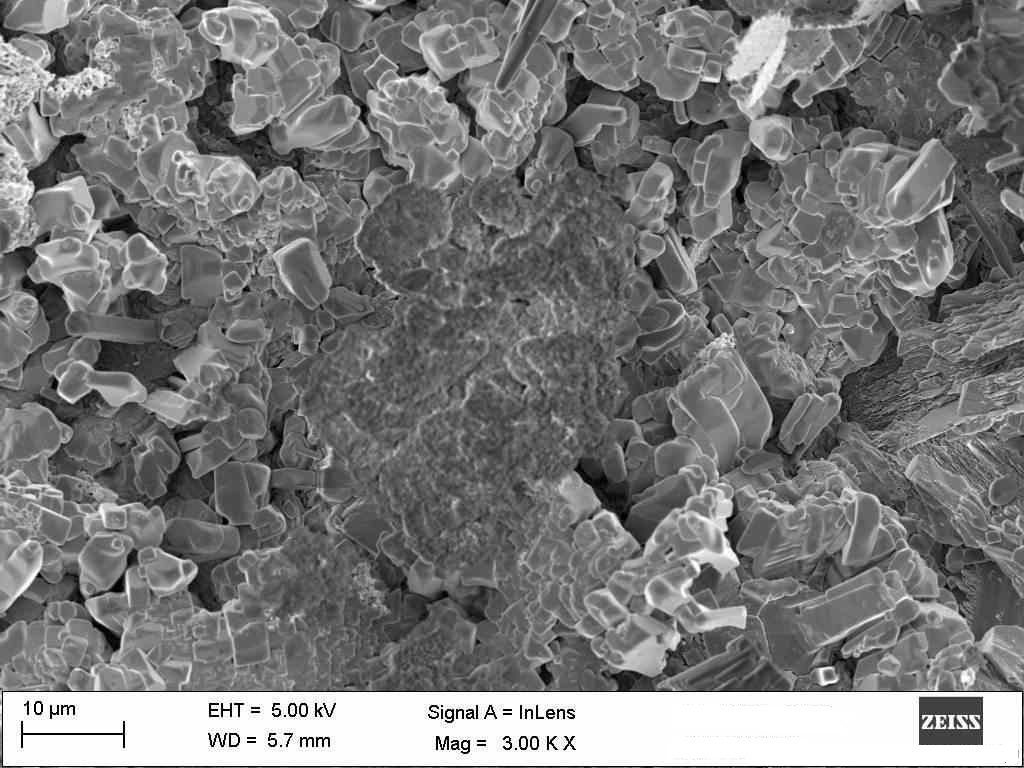A particle is a fine solid material formed either due to condensation of fine solid mass or breakage of large solid mass into smaller single entities.
Particle Definition
“Particles are the small and discrete fragments of matter which tend to flow and spread.”
They have properties that define the nature of the whole matter they form or come from.
Particles are of great importance in our daily life as they are part of many products we use.
They are found in the components of the medicine, food, cosmetics, chemicals we use daily.
Besides, they are also parts of pollution like air-borne particles from factories, dust particles or pollen from plants, etc., which can be harmful to us.
These particles are also present in the soil, and these soil particles decide the type, fertility, and even suitability for the growth of plants.
All the particles, in general, have certain properties like electrical, magnetic, chemical, and physical characters. Due to this, they influence the matter they are present to a large extent.
Particles are classified into different grades based on their particle size. For details on how to measure particle size, read the article Particle size analysis methods.
Let’s glance into all the probable chances of how particles are involved with us in our daily lives.
Importance of Particle Size
In the Pharmaceutical industry:
To maintain proper flow
In filling capsules or bottles with a powder form of drug formulation, the dry material is allowed to flow.
The dry powder flows through pipes and reaches the filler. This flow of material depends on particle size and shape.
To maintain precise fill.
The filling of powder is done by machine. So definite amount of powder to be filled in each capsule is important to obtain a uniform dose in all the capsules.
Fixed particle size helps in a uniform filling of all capsules.
To control the fill rate.
The number of capsules made per hour depends on the rate or speed of fill. This rate and speed of fill also depend on the particle size.
To ensure a better and compact fill in the space.
The presence of gaps or space in the powder after fill leads to porosity and less density resulting in abnormal dose. Precise particle size ensures uniform fill with a predetermined density.
In other industries.
Foods
Tea powder, coffee powder, salt, pickle powders, condiment powders, etc. The smaller is the particle size; the finer is the powder.
Beauty & other skincare items
Talcum powders, prickly heat powders, deodorant, and other sprays, lotions, gels have particles in them. These particles decide the consistency of the product, their performance or efficiency, ease of application, and time of retention on the skin.
For example, in toothpaste, the particle size like those of calcium or silica (silodent) particles decide the teeth polishing ability.
Below is the picture showing microparticles in a bio-glass taken by an electron microscope.

Medicine & drug formulations
All the dosage forms like tablets, capsules, solutions, injections, powders, etc., have medicine or other additives in the form of particles. These particles decide the quantity of the drug in the dose, the stability of the product, its dissolution speed in the body (stomach), the extent of drug absorption into the body, and other factors. So particle size is of prime importance to a pharmacist.
Nanoparticles are used for targeted delivery, better absorption, and also minimize drug side effects.
Building & other construction material

The particles can also be seen in construction material like sand, ceramics, roof cover like asbestos sheets, glass-related items, porcelain, etc. The physical properties, shape, surface area, etc., can influence the consistency, durability, cost of the construction, etc. For instance, sand with fine grade particles is expensive and gives the walls a smooth finish.
Soil
Particles of soil vary in shape, size, and other properties. Hence soil can be graded as coarse soil, fine soil, gravel, clay, etc. The soil with fine particles is the topmost layer, and the lower layers of soil have coarser particles.
Electronics
Many components of the electronic system like sound systems, memory, circuits have particles in the respective materials they are made of, like magnetic speakers, silica wires, etc.
Analytical techniques
Many analytical techniques like HPLC, thin layer chromatography, etc., have particles in their stationary phase. The efficiency of analysis in these techniques depends on the particle size.
Household material
Particles are present in most of the home materials, like in the kitchen, for example, water filters, utensils made of porcelain, etc., in the making of ceramic tiles, glasses for windows, etc.